For better or worse, many people’s first (and maybe only) knowledge about Argentina involves the song “Don’t cry for me Argentina…”
But there is a lot more to the country (obviously) and Evita than Madonna’s iconic role belting out those lyrics from a window of la Casa Rosada.
Evita and Juan Peron are two of the most important historic figures in Argentina, love them or hate them (and most locals fall into one of the two camps), you cannot deny their impact.
History buffs will understandably benefit from keeping Evita sites in Buenos Aires in mind when planning their itinerary.
I recently went on an Evita themed food tour with Detour BA and learned a lot, discovering hidden spots I never knew existed, and needless to say, we ate very well along the way.
This post will highlight important Evita landmarks in Buenos Aires and if you stick with me ’til the end, you’ll find a discount code for the history/food tour.
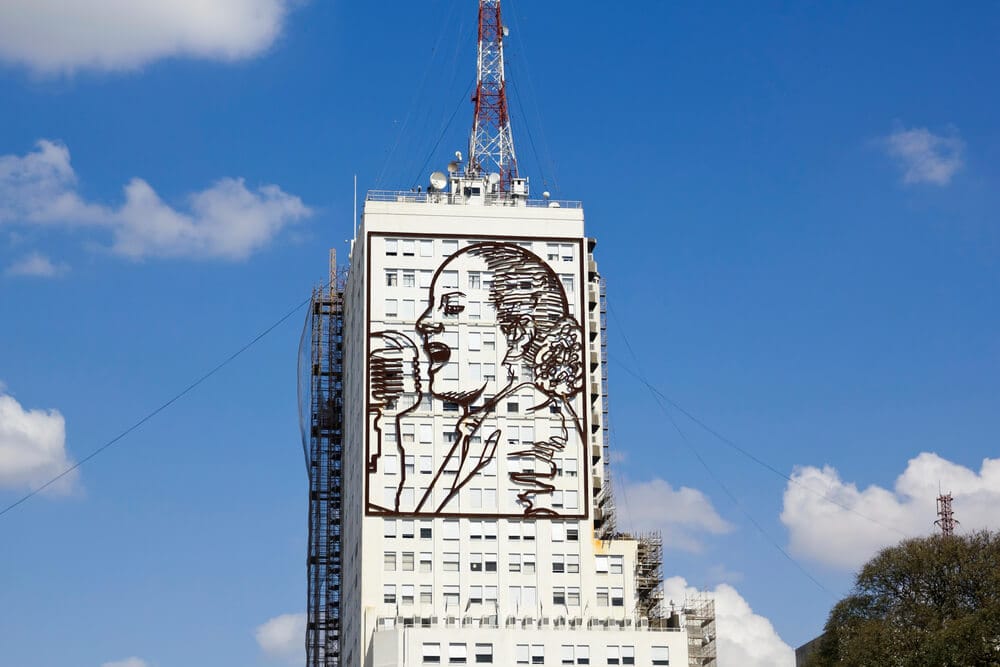
QUICK NOTE: This post contains affiliate links and Sol Salute may receive a commission for purchases made through these links, at no extra cost to you.
NOTE ON TOUR OPERATORS: I link to tours on three tour aggregators – GetYourGuide, Viator, and Tangol. All are reputable. I do my best to find the most affordable option of the three but prices and availability can vary.
Who is Evita?
Evita Peron, born Eva Duarte, may have saint-like importance today but she was born into a hard life in tiny Los Toldos in the Buenos Aires province.
Her parents were unmarried and her father was actually already married with another family in Chivilcoy. Eventually, he unsurprisingly abandoned Eva’s mother and returned to his legal family.
Eva’s mother, Juana Ibarguren, supported her children as a seamstress but their life was difficult with the stigma of the children’s illegitimacy.
At only 15, a young Eva made her way to Buenos Aires with dreams of becoming an actress. She found work in theater and radio and it was in this capacity that the history making cute-meet between Evita and Juan Peron happened, with Eva performing at a 1944 fundraiser for earthquake victims.
From here on out, Eva’s future and Argentina’s history were forever changed.
Eva and Juan were inseparable, she advised him in life and politics and even nearly served as his Vice President before her early death at 33 (to quickly fly through 8 years of important history).
I highly recommend taking a tour if you’re interested in her history, I was able to learn so much from Natalia, our English speaking guide, that I’d never known despite living here for years.
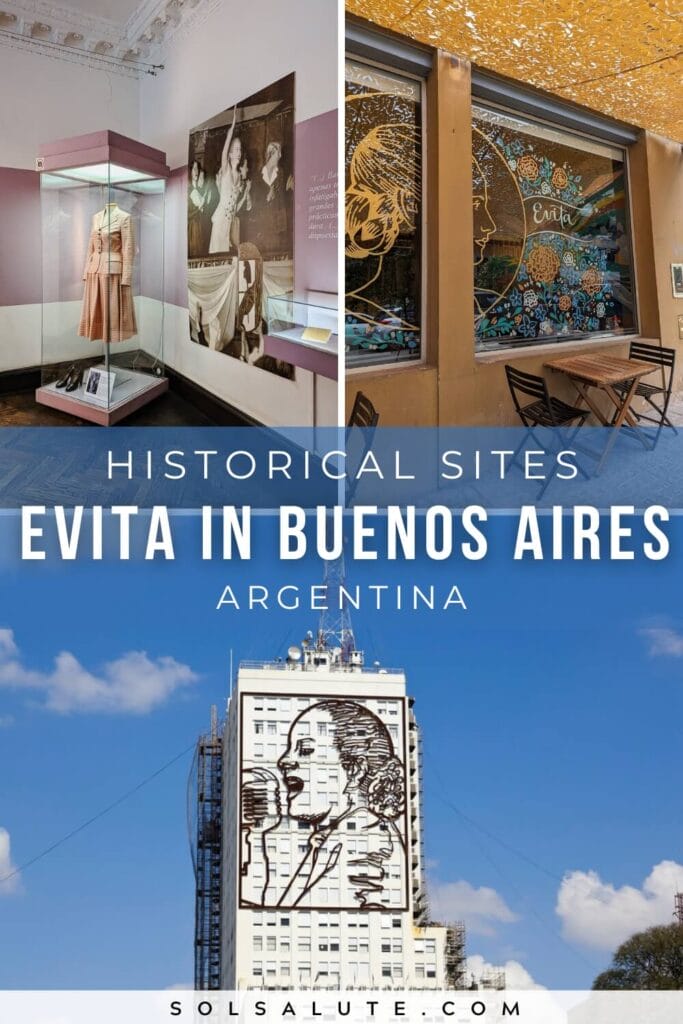
Evita Sites in Buenos Aires
Below are Buenos Aires Evita landmarks to look out for as you tour the city.
Most are included on the Evita tour, others (Casa Rosada & her 9 de Julio murals are not but you’ll definitely see them on your own as you wander the city).
Take the tour and save 10% with my code – SOLSALUTE – by clicking here to reserve. Thanks to Detour BA for inviting me to experience the tour, as always, opinions are 100% my own.
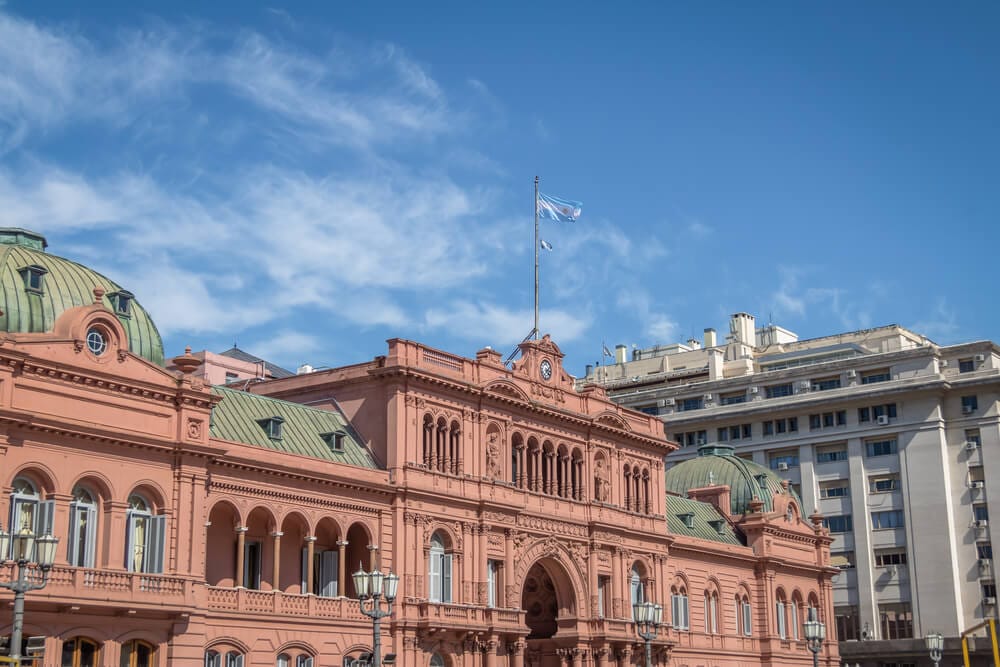
La Casa Rosada’s Famous Balcony
Juan Domingo Perón was imprisoned on October 13, 1945 by the military opposition and the people revolted, demanding his release.
Succumbing to political pressures, he was released on October 17th and addressed thousands of supporters from what was to become the balcony of the Casa Rosada.
Ever since, this balcony has been a symbol of power for the nation’s presidents, where they can address their followers below in the Plaza de Mayo.
A new version of events was propagated by Juan Peron’s administration after he won the 1946 elections, alleging that Eva took to the streets knocking on doors to rally people’s support for his release.
In the film Evita, this is the version of events you see culminating with Evita singing from the balcony (I assume, I have actually not seen the movie yet!).

Recoleta Cemetery: Evita’s Grave
Eva is buried with her father’s family in the Recoleta Cemetery under his name, Duarte.
How to find her grave?
Simply follow tour groups and, really, anyone. She’s the star of the cemetery.
Her body initially disappeared in a 1955 military coup only to be found later in a cemetery in Italy.
Once returned to Argentina, she was buried here with her family 5 meters underground to allow her to rest in peace without any further disturbances.
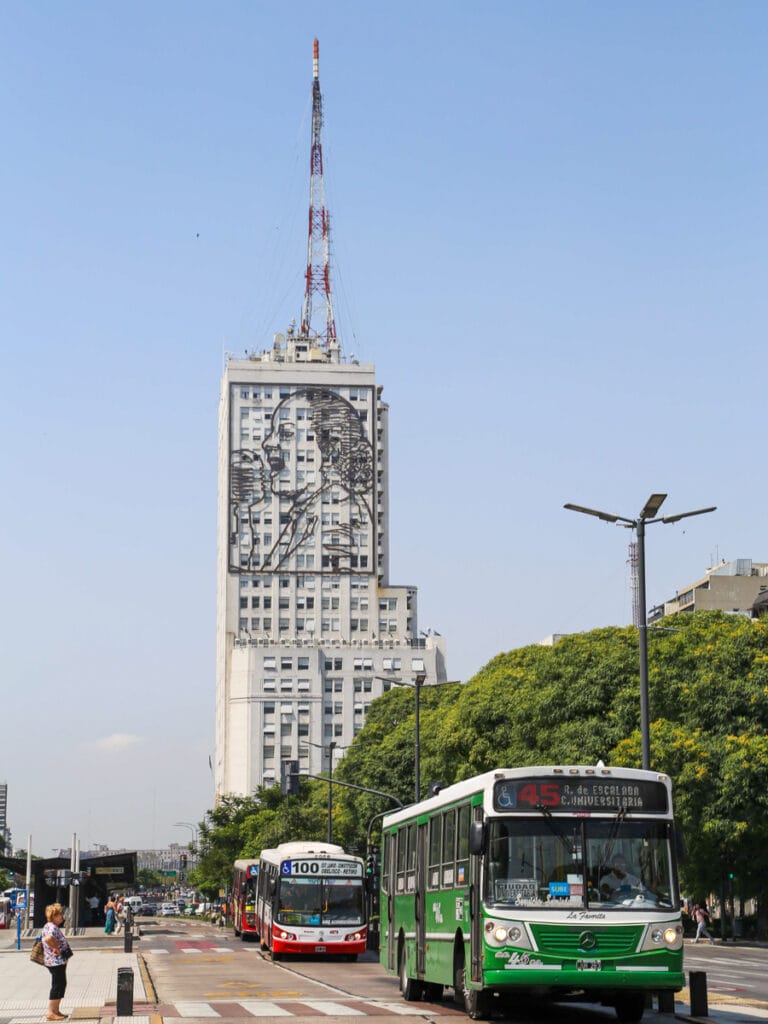
Evita Murals on 9 de Julio
It’s impossible to miss the massive murals of Evita on the building for the Ministry of Public Works on Avenida 9 de Julio.
The building itself juts out into the avenue in plain sight and the 14 ton steel murals that cling to the northern and southern facades are 31 meters tall.
Alejandra Marmo is the artist responsible for the two Evita murals, helped by a team of artists.
The symbolism of the two portraits represent the division of the city and the polarized opinions of Evita herself.
The southern facing portrait is demure and smiling, facing the side of the city that is home to the working class and factories. This is the side of the city that more fully embraces Evita.
The northern facing portrait shows Evita yelling a speech into a microphone, she is combative.
The northern side of the city is wealthier and in general, opposes Evita and her legacy.
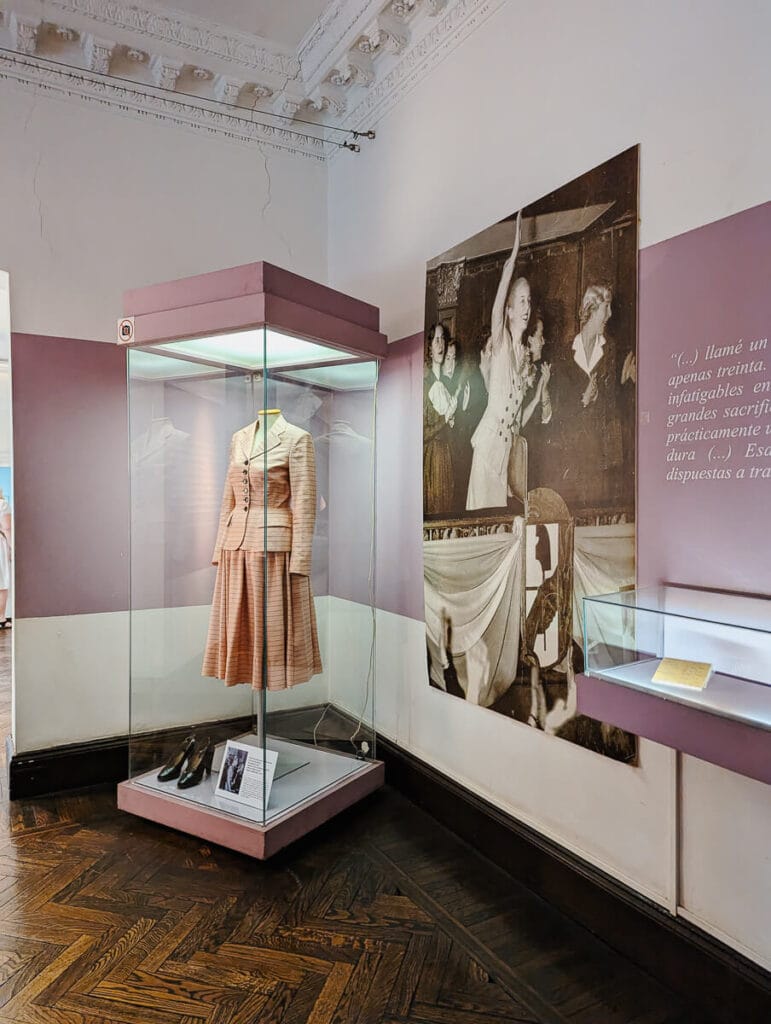
Museo Evita
First opening its doors to the public on the 50th anniversary of her death, Museo Evita in Palermo is a must visit Peron site in Buenos Aires.
Walking through it you’ll pass through the stages of her life, it’s very informative and filled with items from her past (including a number of her stylish dresses).
And to be honest, the Spanish-style mansion it is housed in is worth the visit all on its own.
The museum houses a cafe in the patio that is an excellent lunch option or to rest your feet with a coffee in the afternoon.
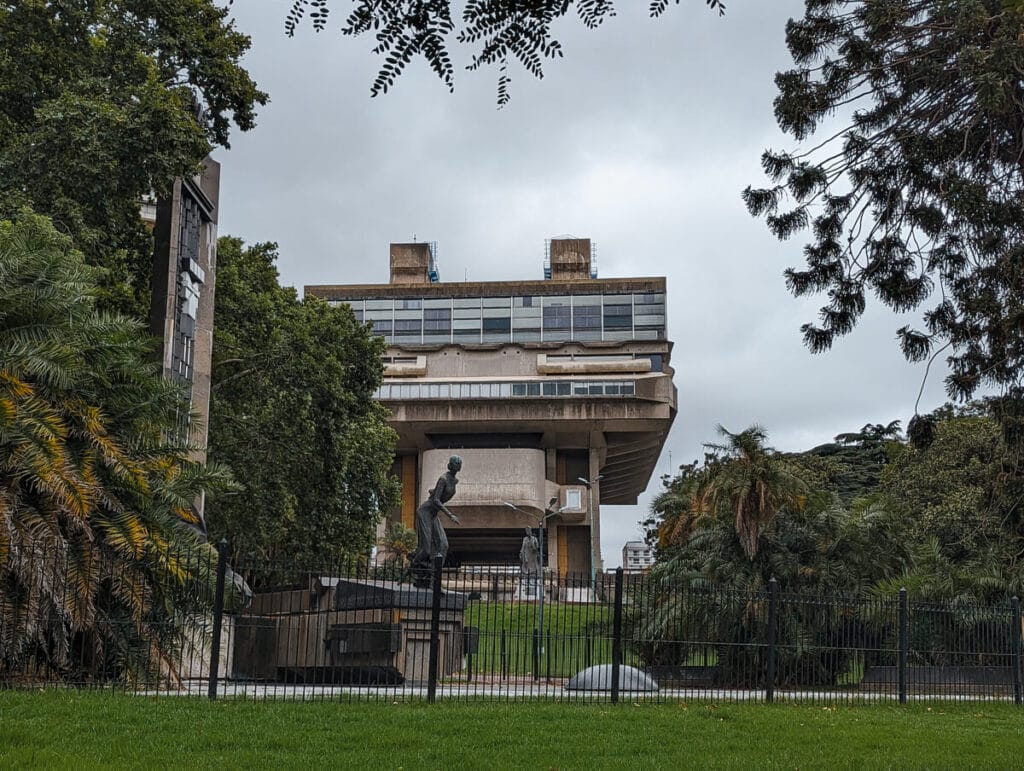
Plaza Evita at the National Library
At the foot of the grassy hill below the National Library at Avenida Del Libertador 2600 you’ll see a statue of a strong Evita in stride.
She is protected by an iron fence to protect her from vandalism.
The statue stands here not because of the library but because of what previously stood in its place, the Palacio Unzué.
The Peron’s used this home as the presidential palace from 1946-1955. Evita passed away in the home and it quickly became a place of pilgrimage for their supporters.
After the military coup in 1955 that overthrew Juan Peron, the dictators ordered that the palace be demolished.
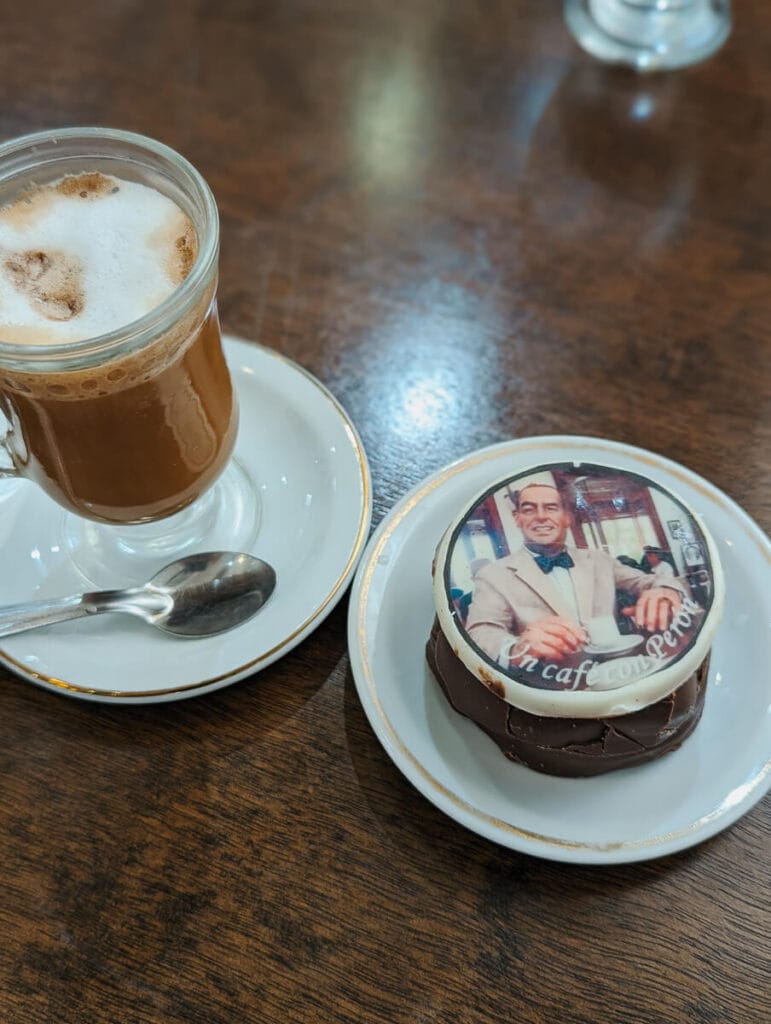
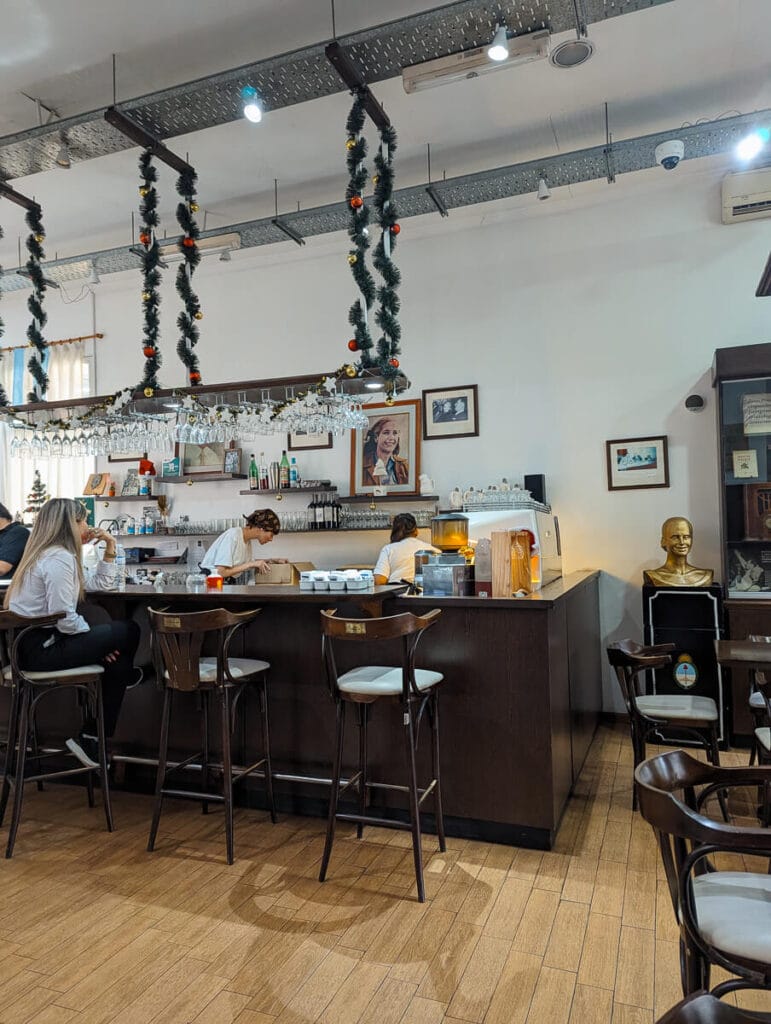
Un Café con Perón
Around the corner from Plaza Evita and her statue on Calle Austria is Un Café con Perón, a Perón themed cafe (I suppose that went without saying) housed in what remains of the original Palacio Unzué.
We stopped here on our walking tour for a coffee and delicious alfajor cookie adorning Juan Peron’s portrait (very kitsch, I’m here for it) and to watch a short film highlighting the ruling couple’s accomplishments.

Evita Tour: A Flavorful Tribute Tour
I was invited by Detour BA to experience their Evita Flavorful Tribute Tour and thoroughly enjoyed it. The tour is a perfect blend of history tour and food tour.
Our guide Natalia was very knowledgeable and I learned a lot about Evita as we crossed the city from Recoleta to Palermo visiting many of the sites listed above.
The tour included breakfast, lunch and dessert mixed in with historical Peronist landmarks and a visit to Museo Evita.
We tried an alfajor adorned with Juan Domingo Peron’s portrait.
We had a choripan, a sandwich emblematic of political demonstrations and a favorite of Peron himself.
The food portion of the tour peaks with lunch at not one, but two Peron themed restaurants and historical landmarks are mixed in with all of these stops.
Book your Buenos Aires Evita Tour | If you want to go on your own Evita tour (or any other of Detour BA’s food/history tours) click here to book and use my code SOLSALUTE for a 10% discount.
Argentina Travel Resources
- BOOK A CONSULTATION | I offer one-on-one travel consultations to help you plan your trip to Argentina. Pick my brain to get a local’s insight. Click here for more information.
- MY MAP | Buy my interactive map with 300+ pins to have access to the city as I see it. It is an invaluable resource. See more here about how it works.
- AIRPORT TRANSFERS | Having a driver waiting for you is ideal for a stress free arrival, Welcome Pickups is the best option for a driver from Ezeiza or Aeroparque.
- TRAVEL INSURANCE | Always travel insured. Anything can happen anywhere and it is scarier and costlier in an unfamiliar country. SafetyWing’s Essential Plan covers unexpected travel and medical emergencies and even offers add-ons like electronics theft or adventure sports. It is the best if you’re coming on vacation. If you’re coming as a digital nomad or an extended stay, you need their Complete Nomad Plan which also covers routine check ups, maternity, mental healthcare and more. Read more: Health Insurance in Argentina
- PHONE PLAN | These days, traveling with data is essential. Especially in Argentina where everything is managed on Instagram and WhatsApp. I recommend this E-SIM card. It’s hassle-free and affordable, for more read how to get an Argentina sim card.
- ACCOMMODATION IN ARGENTINA | booking.com is the most common hotel site used in Argentina and it’s where you’ll find the most options.
- RENTAL CARS | I love to travel Argentina via road trip, Discover Cars is a great platform to compare different rates and providers.
- BUS TICKETS | Check Busbud for long distance bus routes and tickets.
- VPN | If you’ll be using a public WiFi connection and want to secure your data, I highly recommend using a VPN, I personally use and have had a good experience with ExpressVPN. I also use it to access Hulu and American Netflix from Argentina.
- FLIGHTS | Always check Google Flights and Skyscanner for flights to and within Argentina. Aerolineas Argentina is the local airline with the most routes. FlyBondi and Jetsmart are two budget airlines with dirt-cheap prices (but expect to pay for every add-on like luggage).


